Our pioneering pilot project offers innovative design ideas for transforming main road school streets.
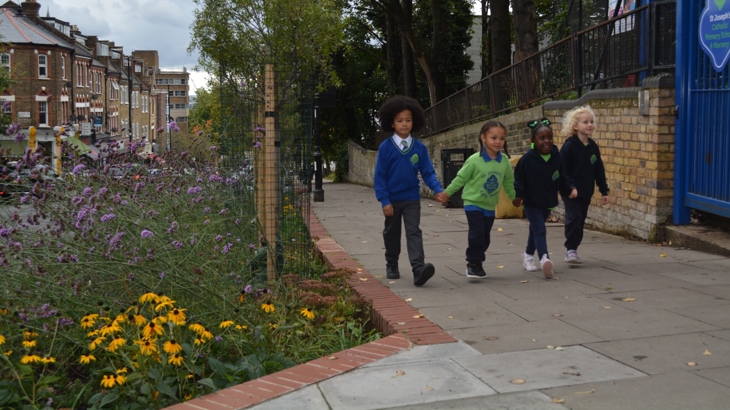
Children can now enjoy a wider, safer footway outside their school. Photo: Julie Plichon/Sustrans
At Sustrans, we champion the concept of school streets, which involve timed closures outside schools to create safe spaces for pupils and parents, and to encourage drop-offs and pick-ups by foot, scooter, or cycle.
These closures present an opportunity to transform these areas, not just during school hours, but throughout the day.
Our designs can be permanent, ensuring the improvements benefit the community even when school is not in session.
Pioneering design for main road school streets
While some schools are situated on arterial roads, making closures challenging, Sustrans has pioneered solutions for school streets on main roads.
We allocate more space for parents with greening and seating, creating inviting parent pick-up points.
This approach not only enhances the street scene but also aims to modify driver behaviour, reminding motorists that they are guests in these spaces where children, parents, pedestrians, and cyclists have priority.
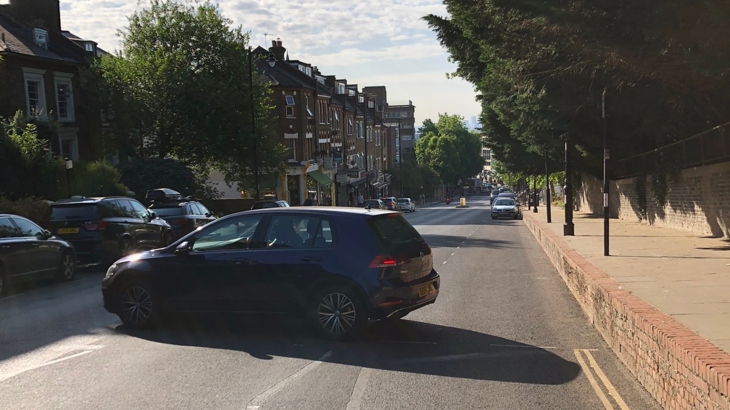
Before the school street transformation - a wide carriageway and narrow footway. Photo: Sustrans.
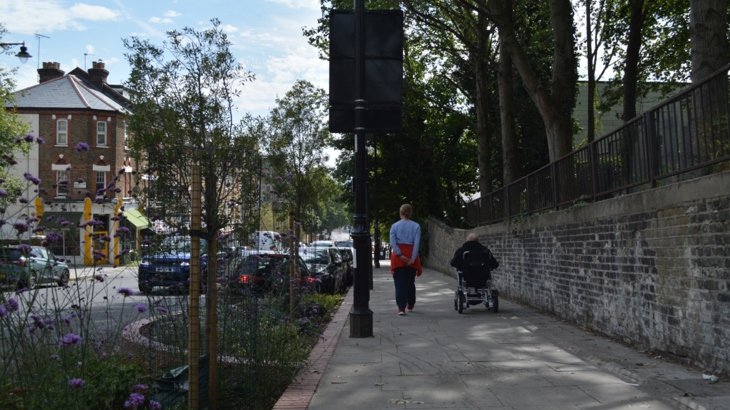
After the design improvements - the footway has been widened and plants added. Photo: Sustrans.
St joseph's School, located on Highgate Hill in the London Borough of Islington, is one of three schools selected for a pioneering pilot project aimed at transforming main road school streets.
The school sits on a wide carriageway, which encourages high vehicle speeds and makes it unattractive for most cyclists mixing with traffic.
Additionally, the added noise pollution that comes with higher speeds is not pedestrian friendly, particularly for children walking to school.
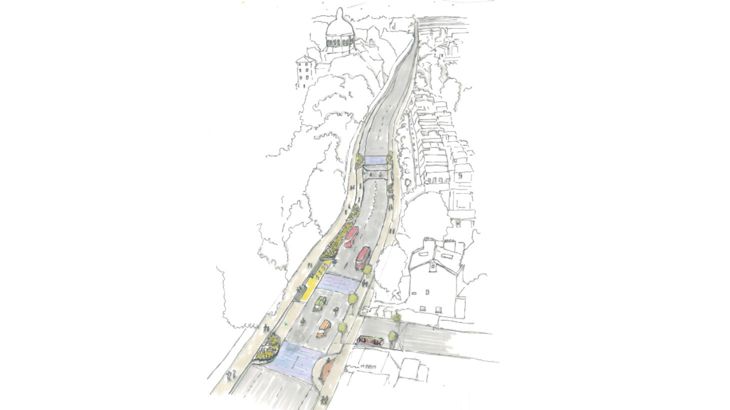
Our London Design and Engineering team sketched their concepts for transforming this main road school street. Image: Sustrans.
Solving road safety issues
Through site analysis, our London Design and Engineering team identified several issues impacting children and pedestrians.
Highgate Hill’s 10% incline caused difficulties for cyclists, leading to numerous collisions, especially “left hook” incidents, in which a driver misjudges the amount of time they have to safely overtake a cyclist before they make a left turn on a junction.
Designing in accessibility
A high retaining wall isolated the western footway, limiting accessibility for disabled people, children and families pushing buggies, while guardrails further restricted movement.
Vehicle speeds often exceeded limits, and parents driving and dropping off children in the bus lane worsened congestion and safety concerns.
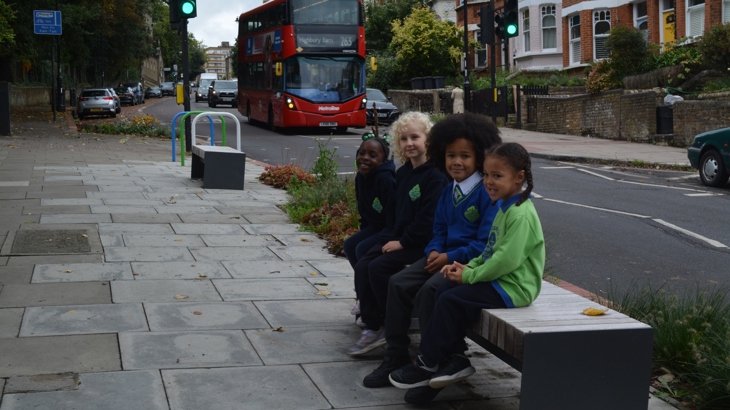
Resting spots for parents on the school run and bike racks have been included in the school street design. Photo: Julie Plichon/Sustrans.
Co-designing the space with the school community
Islington Council asked us to engage with the school community to identify issues and explore improvements.
We held workshops and co-designed the street to encourage walking and cycling, improve the streetscape, and reduce vehicle speeds.
Our research revealed Highgate Hill was home to Europe’s first tram trolley, pulled by an underground gear mechanism.
Inspired by this, we incorporated gears into the design as planters and seating, integrating with the retaining wall as gateway features.
These elements also contribute to traffic calming by slowing approaching vehicles.
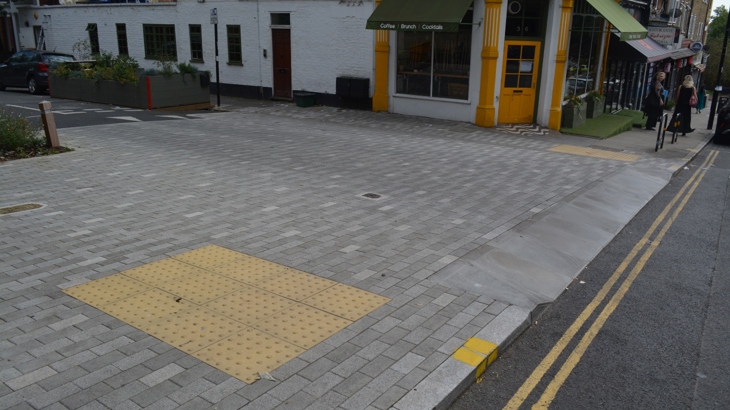
The footway outside a cafe opposite the school, where many families wait to cross the road, has been widened to emphasise pedestrian priority. Photo: Julie Plichon/Sustrans.
We developed three design options and consulted with the local community and school.
After thorough engagement, one option was chosen with LB Islington and advanced to detailed design.
The final design has transformed the carriageway, with large planting beds framing the school street and creating a more pedestrian-friendly environment.
The corner café now benefits from improved footways, extending into the enhanced space.
The streetscape is safer, more attractive, and better suited to the needs of children, parents, and the community.





